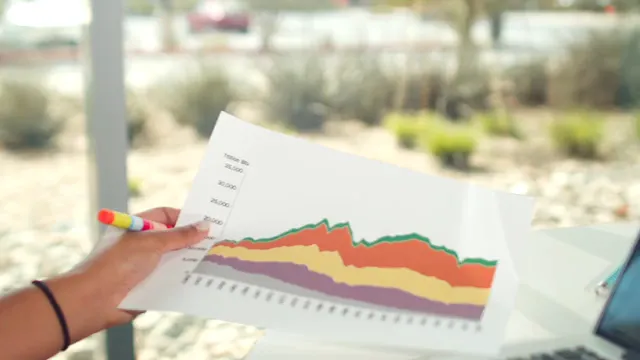Introduction
Educational statistics play a vital role in shaping effective education policies. These statistics provide insights into student performance and institutional effectiveness. In our data-driven society, understanding educational outcomes through statistics is increasingly crucial for decision-makers.
For a deep dive into statistical methods used in education and psychology, consider Statistical Methods for Education and Psychology by William M. K. Trochim. This book is like a GPS for navigating the often confusing landscape of educational data.
Summary and Overview
Educational statistics encompass the collection and analysis of data in various educational contexts. This includes metrics such as enrollment rates, graduation rates, and teacher statistics. Such data helps inform policy decisions, making educational systems more effective and equitable.

Key organizations like the National Center for Education Statistics (NCES), UNESCO, and OECD compile and analyze these statistics. Their work highlights trends such as increasing enrollment in higher education and the impact of technology on learning. Moreover, globalization has facilitated international comparisons, revealing disparities and successes in different education systems. Understanding these trends allows stakeholders to make informed decisions and improve educational outcomes for all students.
Key organizations like UNESCO and OECD are essential for gathering educational statistics. unesco institute for statistics
The Importance of Educational Statistics
Defining Educational Statistics
Educational statistics involve collecting and analyzing data related to education. This includes information on enrollment rates, graduation rates, and teacher qualifications. Various organizations, such as the National Center for Education Statistics (NCES) and UNESCO, gather this data.
These statistics are essential for education research. They help educators and policymakers identify trends and make informed decisions. By analyzing data, researchers can uncover patterns that affect student success and institutional effectiveness.

For those diving into the nuts and bolts of data analysis, Data Analytics for Beginners: A Comprehensive Guide to Understanding Data Analysis is an excellent starting point. It’s like having a cheat sheet for decoding the vast world of data.
Uses in Policy Making
Educational statistics greatly influence policy decisions. At local, national, and international levels, data informs strategies to improve education systems. For example, the U.S. uses statistics to assess school performance and allocate resources effectively. In Finland, data-driven policies have led to innovative teaching methods and improved student outcomes.
One notable example is the implementation of universal pre-K programs in various states. Policymakers relied on enrollment and achievement data to support these initiatives. By analyzing the impact of early education, they crafted policies that benefit young learners.

Impacts on Educational Outcomes
Statistics play a crucial role in measuring and enhancing educational outcomes. They provide insights into what works in teaching and learning. For instance, schools that analyze test scores can identify areas requiring improvement.
A successful intervention based on statistical analysis occurred in Chicago. The city implemented a tutoring program for struggling students. By using data to pinpoint those in need, they saw significant gains in academic performance.
Another example is the use of attendance statistics. Schools that monitor and address absenteeism have reported improved graduation rates. By understanding trends in attendance, educators can develop targeted strategies to keep students engaged.
In summary, educational statistics are vital for understanding and improving the education landscape. They guide policy decisions and help drive successful educational outcomes. By leveraging data, we can create a brighter future for learners everywhere.

Graduation Rates
Graduation rates are essential indicators of educational success. They measure the percentage of students who complete their studies within a specified timeframe. Typically, graduation rates are calculated by dividing the number of graduates by the number of students who started the program. This statistic is crucial for assessing the effectiveness of educational institutions and their ability to support students.
In the United States, the overall graduation rate for public high schools reached about 86% in 2020. However, this number varies significantly by region and demographic factors. For example, graduation rates are higher in suburban areas, often exceeding 90%, while urban districts may see rates around 75%. Additionally, disparities exist along racial and socioeconomic lines. For instance, graduation rates for White students hover around 89%, compared to 80% for Hispanic students and 76% for Black students. These statistics highlight the ongoing challenges in achieving equitable educational outcomes.

To better understand these dynamics, The Art of Statistics: Learning from Data by David Spiegelhalter offers a thorough exploration of how to interpret data effectively, which is key in understanding graduation rates.
Teacher Statistics
Teacher statistics play a vital role in understanding the educational landscape. They encompass various aspects, including teacher qualifications, salaries, and retention rates. Well-qualified teachers are crucial for student success. Data shows that about 94% of public school teachers hold a bachelor’s degree or higher. However, only 69% have a degree in the subject they teach, which raises concerns about instructional quality.
Teacher salaries also impact retention. On average, U.S. teachers earn around $58,000 annually, but this figure varies by state. For instance, teachers in New York can earn over $85,000, while those in Mississippi average just $47,000. These differences can lead to higher turnover rates in lower-paying regions, ultimately affecting student learning.

Recent trends indicate a growing focus on teacher well-being and professional development. Schools are emphasizing supportive environments and resources to retain talented educators. This shift aims to address high turnover rates, which can exceed 15% in some districts. For more insights on the impact of teacher quality, check out The Lean Startup by Eric Ries. It discusses innovation in various sectors, including education.
Educational Attainment Levels
Educational attainment statistics provide insights into the qualifications of the workforce. Higher levels of education typically correlate with better job prospects and higher earnings. For example, individuals with a bachelor’s degree earn about 66% more than those with only a high school diploma.
Demographic factors also influence educational attainment. In 2022, approximately 47% of adults aged 25 to 34 in OECD countries held a tertiary education degree. However, disparities exist based on gender and ethnicity. For instance, about 50% of women in this age group have a degree, compared to 44% of men. Furthermore, minority groups often face barriers, with only 30% of Hispanic adults and 28% of Black adults achieving similar educational levels.

These statistics underscore the importance of targeted policies to promote educational equity. By addressing gaps in access and resources, we can enhance workforce development and ensure a more inclusive economy. If you’re interested in how data science plays a role in these discussions, Data Science for Dummies by Judith Hurwitz is a fantastic resource.
Sources of Educational Statistics
International Data Sources
When it comes to global educational statistics, organizations like UNESCO and OECD are invaluable. The United Nations Educational, Scientific and Cultural Organization (UNESCO) gathers extensive data on education worldwide. This data covers various aspects, from enrollment figures to teacher statistics. Their comprehensive databases support policymakers in understanding educational trends across different nations.

The Organisation for Economic Co-operation and Development (OECD) also plays a pivotal role. They provide insights through reports like the Programme for International Student Assessment (PISA). PISA allows countries to compare their educational outcomes effectively. This data helps identify strengths and weaknesses within education systems globally. By offering a standardized framework for evaluation, these organizations facilitate meaningful cross-country comparisons.
These international data sources empower educators and policymakers. They can identify successful strategies and adapt them to local contexts. The shared knowledge fosters collaboration and inspires educational reforms that benefit students everywhere. For those looking to dive deeper into the world of data science, The Data Science Handbook: A Guide for Data Scientists and Data Engineers is an excellent reference.
Importance of Data Quality
Data quality is crucial in educational statistics. Accurate and reliable data ensures that decisions made by educators and policymakers are based on solid evidence. When data is flawed, it can lead to misguided policies that fail to address real issues.
Collecting high-quality data presents challenges. For instance, varying definitions of educational terms across countries can skew results. Additionally, issues like underreporting and data gaps can arise, especially in underserved populations. These challenges make it essential to maintain rigorous data collection methods.

Transparency in data reporting is also vital. Stakeholders must trust the data to use it effectively. By prioritizing data quality, we can ensure that educational statistics serve their purpose. They should inform policies that genuinely improve educational outcomes for all students. For those interested in mastering statistical analysis, I recommend A Guide to Statistical Analysis: A Practical Approach for Researchers by Michael J. de Smith.
Globalization and Educational Comparisons
In today’s interconnected world, understanding educational quality and access requires international comparisons. Globalization has made it essential to analyze how different countries perform in education. Such comparisons help identify best practices and areas needing improvement.
International education indices, like the Programme for International Student Assessment (PISA), provide valuable insights. PISA evaluates the reading, math, and science skills of 15-year-olds across various countries. The results highlight educational strengths and weaknesses, guiding policymakers in their efforts to enhance learning outcomes.

Another significant index is the Trends in International Mathematics and Science Study (TIMSS). TIMSS assesses the math and science knowledge of fourth and eighth graders globally. Countries that excel in TIMSS often share strategies worth emulating. For instance, Singapore consistently ranks at the top, reflecting its effective educational policies and teaching methods.
Additionally, the OECD’s Education at a Glance report offers a comprehensive overview of global education statistics. It covers enrollment rates, graduation rates, and teacher statistics across member countries. This data allows countries to compare their educational systems with others, fostering a culture of continuous improvement.
These global comparisons are crucial in understanding how educational systems operate. They reveal disparities in access and quality, urging nations to address inequities. By sharing knowledge and insights, countries can learn from each other, ultimately enhancing education for all. If you’re curious about the unpredictable nature of educational outcomes, The Black Swan by Nassim Nicholas Taleb is a fascinating read.

Challenges in Educational Statistics
Data Gaps and Inequality
Data gaps pose a significant challenge in educational statistics. Often, underserved populations lack comprehensive data on their educational experiences. This lack of information can skew our understanding of educational quality and access. When certain groups are underrepresented, it becomes challenging to create effective policies.
For example, rural areas may have fewer resources, leading to lower enrollment and graduation rates. Without accurate data, policymakers may overlook the specific needs of these communities. This results in policies that do not address the root causes of educational inequality.

Moreover, disparities in data collection methods can exacerbate these issues. Some regions may have robust data systems, while others struggle to gather basic information. Such inconsistencies hinder efforts to develop targeted interventions aimed at improving educational opportunities.
Interpretation of Data
Accurate interpretation of educational statistics is vital but often challenging. Misinterpretation can lead to misguided policies that fail to address real issues. For instance, a rise in graduation rates might seem positive, but it could mask underlying problems, such as grade inflation.
Statistical literacy among educators and policymakers is essential. They must understand how to analyze and apply data effectively. Without this knowledge, the risk of drawing incorrect conclusions increases significantly. Training programs focusing on statistical interpretation can empower stakeholders to make informed decisions.

By enhancing statistical literacy, we can ensure that educational statistics serve their intended purpose. This, in turn, helps drive policies that effectively improve educational quality and access for all students. For more on the psychological aspects of decision-making, check out Thinking, Fast and Slow by Daniel Kahneman.

Conclusion
Educational statistics are crucial for shaping effective policies and improving outcomes. They provide insights into student performance and institutional effectiveness. Ongoing data collection and analysis are essential to address emerging educational challenges.
Stakeholders must commit to utilizing statistics in decision-making. By doing so, we can create a more equitable and effective education system for all learners. If you’re interested in enhancing your understanding of data visualization, check out The Visual Display of Quantitative Information by Edward R. Tufte. It’s an essential read for anyone working with data.
Please let us know what you think about our content by leaving a comment down below!
Thank you for reading till here 🙂
All images from Pexels




